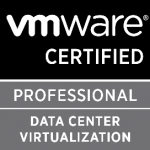Objective 2.1 – Configure vNetwork Standard Switches
See also those similar posts: Objective 2.1 – Configure vNetwork Standard Switches e Objective 2.1 – Configure vNetwork Standard Switches and Objective 2.1 – Configure vNetwork Standard Switches.
Identify vNetwork Standard Switch capabilities (same as vSphere 4.x)
See: VMware Virtual Networking Concepts and VMware Virtual Networking.
Create/Delete a vNetwork Standard Switch (similar as vSphere 4.x)
See the vSphere Networking Guide. No need to know the CLI…
Note that now also from the GUI the vSwitch MTU can be changed.
Add/Configure/Remove vmnics on a vNetwork Standard Switch (same as vSphere 4.x)
See the vSphere Networking Guide (page 16 and 17). Each physical NIC act as a vSwitch uplink.
Configure vmkernel ports for network services (similar as vSphere 4.x)
See the vSphere Networking Guide (page 14). The VMkernel port groups can be used for:
- Management (the portgroup must be flag with “Management” option).
- vMotion (the portgroup must be flag with “vMotion” option).
- Management (the portgroup must be flag with “fault tolerance logging” option).
- IP storage, like iSCSI (with software initiator) or NFS.
Note that now also from the GUI the MTU can be changed.
Add/Edit/Remove port groups on a vNetwork Standard Switch (same as vSphere 4.x)
See the vSphere Networking Guide (page 12).
A VLAN ID, which restricts port group traffic to a logical Ethernet segment within the physical network, is optional. For a port group to reach port groups located on other VLANs, the VLAN ID must be set to 4095. If you use VLAN IDs, you must change the port group labels and VLAN IDs together so that the labels properly represent connectivity.
Determine use case for a vNetwork Standard Switch (same as vSphere 4.x)
Both standard (vSS) and distributed (vDS) switches can exist at the same time. Note that vDS can give more functions that vSS. But vDS license require the Enterprise+ edition, so for all other editions the only way is use vSS.
For very small environment vSS could be most simple: everything should be controlled on local host. Basically, you go to Local Host->Configuration->Networking. Then, you start everything from there.











